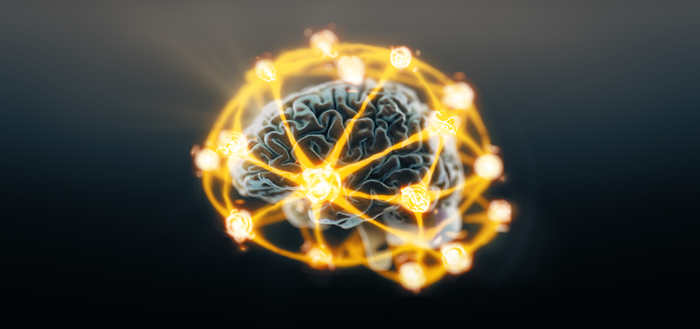Artificial intelligence has grown increasingly in recent years, with applications including speech recognition, picture identification, medical diagnosis and many others. Quantum technology, on the other hand, is capable of processing power much beyond that of even the world’s most powerful supercomputer.
 Abstract representation of a neural network which is made of photons and has memory capability potentially related to artificial intelligence. Image Credit: Equinox Graphics, University of Vienna.
Abstract representation of a neural network which is made of photons and has memory capability potentially related to artificial intelligence. Image Credit: Equinox Graphics, University of Vienna.
Scientists at the University of Vienna have now created a novel device known as a quantum memristor that might allow these two worlds to meet, unlocking previously unimaginable powers. The experiment was carried out in partnership with the Italian National Research Council (CNR) and Politecnico di Milano on an integrated quantum processor that operates on single photons. The research was published in the journal Nature Photonics.
Neural networks are mathematical models that are at the core of all artificial intelligence applications. The biological structure of the human brain, which is made up of linked nodes, inspired these models.
Neural networks can be mathematically instructed by tuning their inner structure until they are subject to human tasks, such as recognizing faces, interpreting medical images for the diagnosis, and even continuing to drive cars, much like how the brain learns by continuously reorganizing the connections between neurons.
Developing integrated devices capable of swiftly and effectively completing the calculations necessary in neural networks has therefore become a key academic and industrial research priority.
The development of the memristor in 2008 was one of the key game-changers in the area. The memory-resistor, or memristor, is a device that adjusts its resistance based on a memory of a previous current. Experts noticed almost instantly that the unique behavior of memristors was remarkably comparable to that of neural synapses (among many other applications). As a result, the memristor has become a crucial component in neuromorphic designs.
Prof. Philip Walther and Dr. Roberto Osellame from the University of Vienna, the National Research Council (CNR) and the Politecnico di Milano have now suggested that it is possible to engineer a device that behaves like a memristor while functioning on quantum states and also being able to encode and transmit quantum information. To put it another way, a quantum memristor.
The dynamics of a memristor seem to violate usual quantum behavior, which makes realizing such a device difficult.
The physicists overcame the difficulty by employing single photons, or single quantum particles of light, and using their unique capacity to propagate continuously in a combination of two or more routes. Single photons propagate via waveguides laser-written on a glass surface and are directed on a superposition of many routes in their experiment.
One of these pathways is used to detect the flux of photons passing through the device, and this quantity regulates the transmission on the other output via a complex electronic feedback mechanism, resulting in the desired memristive behavior.
The researchers have developed simulations indicating that optical networks containing quantum memristors may be utilized to learn both on classical and quantum tasks, implying that the quantum memristor could be the missing link connecting artificial intelligence and quantum computing.
Unlocking the full potential of quantum resources within artificial intelligence is one of the greatest challenges of the current research in quantum physics and computer science.
Michele Spagnolo, Study First Author, Faculty of Physics, Vienna Center for Quantum Science and Technology, University of Vienna
Robots can learn quicker when employing quantum resources and borrowing strategies from quantum computation, according to a recent study led by Philip Walther of the University of Vienna. This remarkable discovery is a step closer to a world in which quantum artificial intelligence is a reality.
Journal Reference:
Spagnolo, M., et al. (2022) Experimental photonic quantum memristor. Nature Photonics. doi.org/10.1038/s41566-022-00973-5.